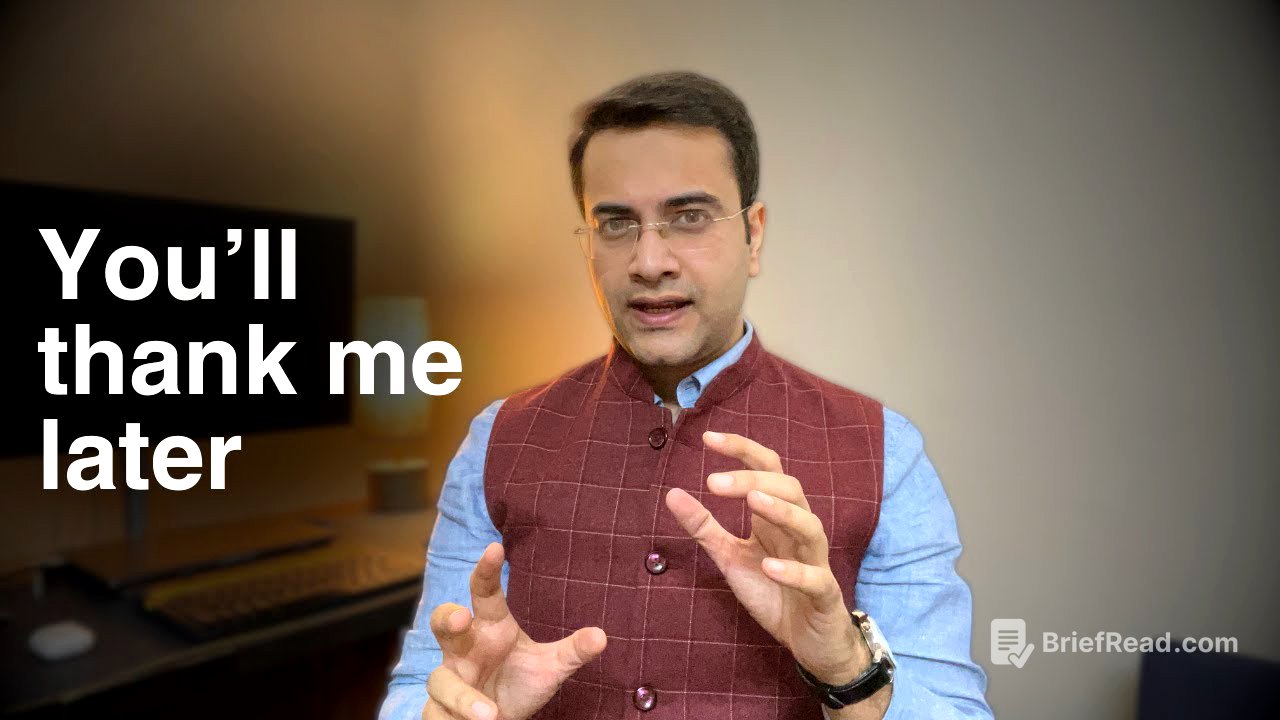TLDR;
The video tells a personal story about overcoming laziness and achieving ambitious goals by breaking them down into smaller, manageable steps. It emphasizes the importance of consistent action, even in small increments, to build momentum and avoid the trap of overthinking and inaction. The key takeaways are:
- Ambitious goals can be overwhelming, leading to analysis paralysis and inaction.
- Breaking down large goals into microscopic tasks makes them less daunting and easier to start.
- Consistent, small efforts build momentum and lead to significant achievements over time.
Introduction: The Story of Karan (and Areeb) [0:00]
The video starts with the story of Karan, an average student with big dreams of attending a top engineering college and having a successful career. Despite his ambitions, Karan struggles to translate his dreams into action, failing to score well in the necessary entrance exams even after taking a year off to prepare. He ends up in a backup college, surrounded by others who see it as a second choice, which leads to frustration and a realization of the importance of hard work. The speaker then reveals that the story is actually his own, highlighting his journey from a frustrated student to a gold medalist with a job in a government organization.
The Trap of Ambitious Goals [4:14]
The speaker reflects on his experience and observes that ambitious people often face the challenge of setting very high goals, which can be daunting. Unlike those with smaller goals, ambitious individuals tend to overanalyze the path to success, questioning their direction and the effort required. This analysis can lead to inaction as they get stuck in a cycle of planning and justification, delaying the necessary steps to achieve their dreams.
The Importance of Action and Momentum [5:50]
The speaker emphasizes that the gap between ambition and action leads to disappointment. He references Newton's law of inertia, explaining that a body in motion stays in motion, while a body at rest stays at rest. This illustrates how difficult it can be to start taking action when one is stuck in a cycle of inaction. Maintaining momentum through consistent effort is crucial for achieving goals.
The Solution: Microscopic Goals [6:49]
The solution to overcoming inaction is to break down large goals into very small, manageable tasks. Instead of focusing on the overwhelming task of "conquering the Himalayas," one should focus on taking one step at a time. For example, when writing a book, focus on writing one sentence or even one word. The speaker acknowledges that ambitious people may find this approach slow or inefficient, but it is essential for building momentum and achieving larger objectives.
Applying Microscopic Goals to Content Creation and Beyond [8:01]
The speaker uses the example of reaching 1 million subscribers on YouTube to illustrate the concept of microscopic goals. Instead of being daunted by the massive effort required to upload thousands of videos, focus on creating one video at a time. He shares his experience of starting a channel in 2018 with the initial goal of reaching just 500 subscribers, eventually surpassing 60,000. This demonstrates the power of consistency and small efforts in achieving significant results.
Conclusion: Embrace Small Steps in 2025 [9:44]
The speaker encourages viewers to embrace the power of microscopic goals in the coming year. He reiterates that even with big dreams and ambitions, success can be achieved by taking one step at a time. He concludes by asking viewers to subscribe, share the video, and provide feedback in the comments to help him grow the channel and create more useful content.









